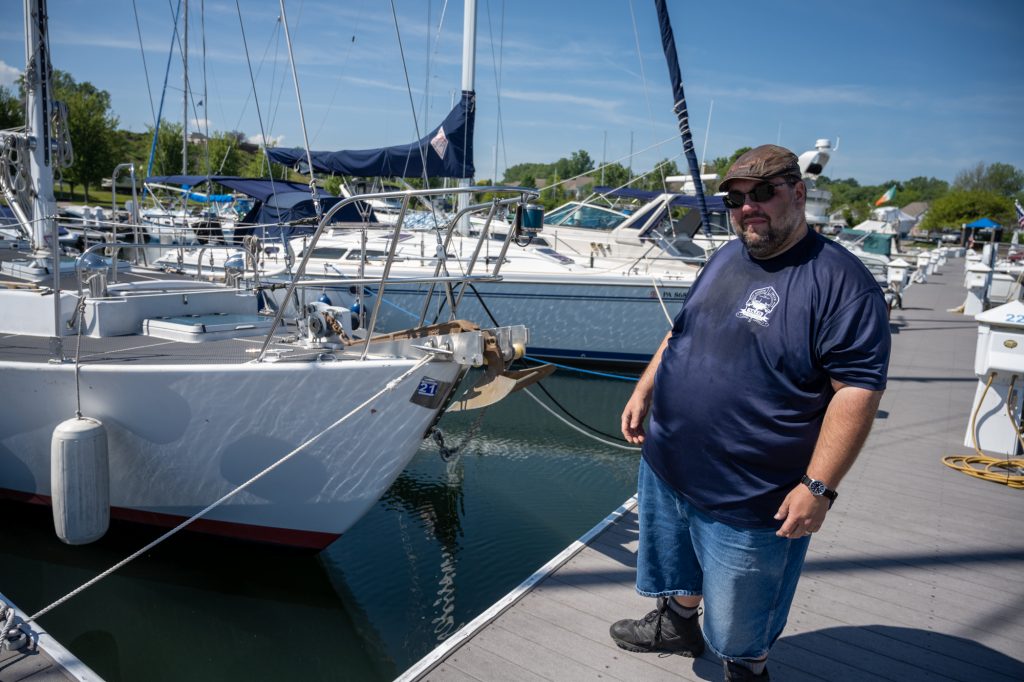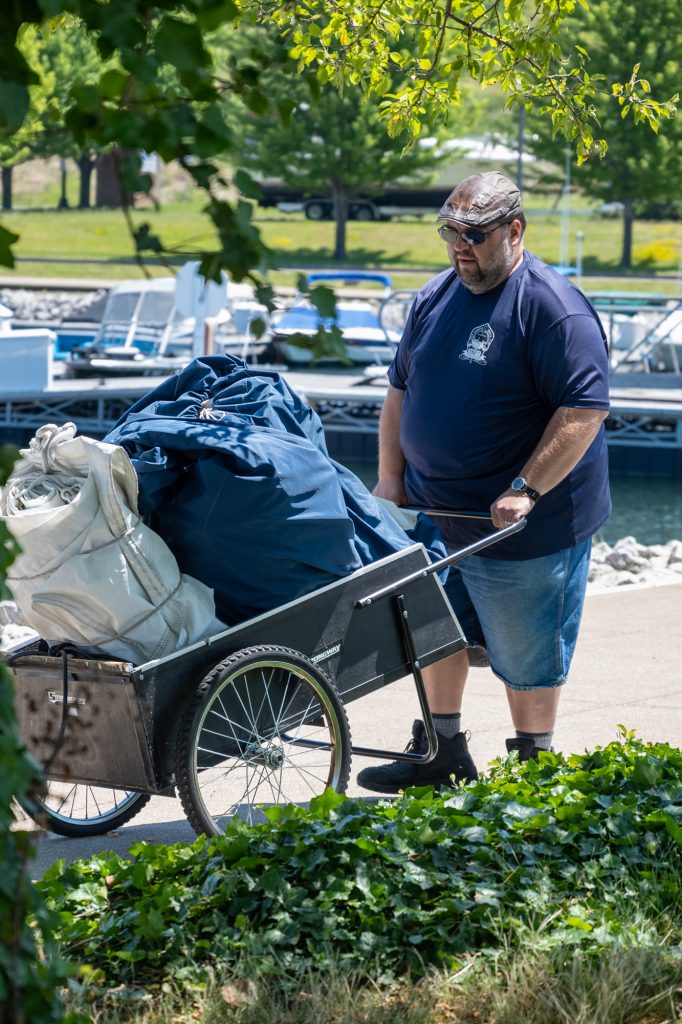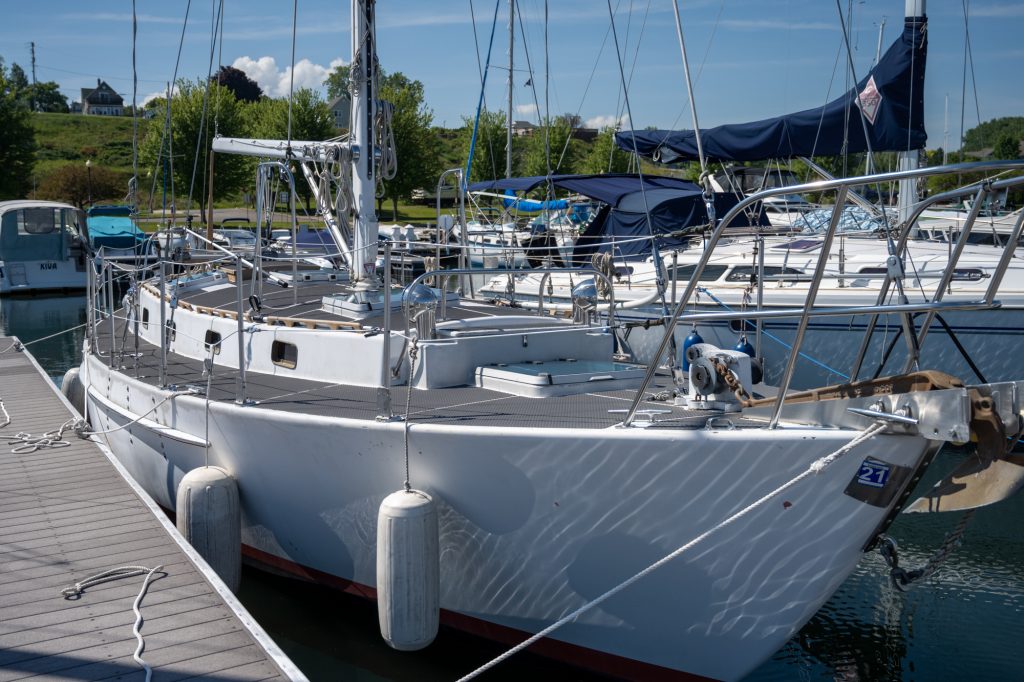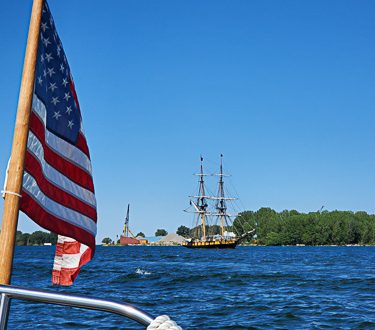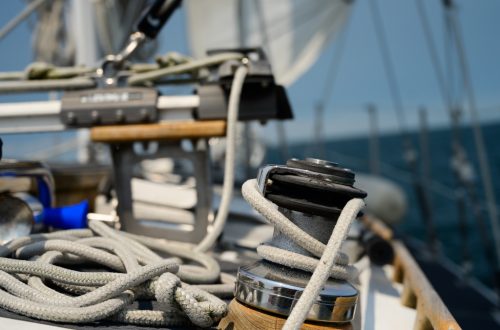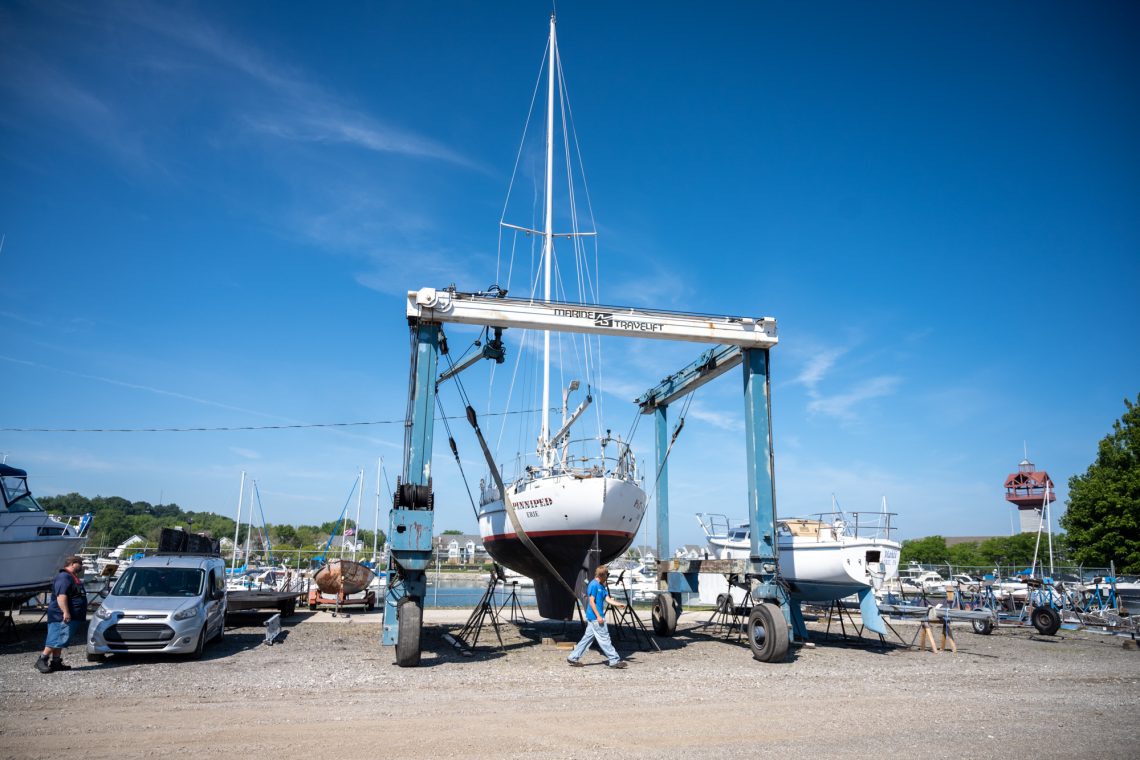
Pinniped Launched!
This is our second season with our Jason 35, the sailing vessel Pinniped. We had plans to get an early start this spring, sanding off the old bottom paint down to the barrier coat, and then getting a nice, smooth, clean double coat of bottom paint on her. Her builder and previous owner was on a five-year refresh cycle for bottom paint, where he’d strip her down to the barrier coat every five years and start fresh, and in between do touch-ups every spring. This should have been the year for a fresh start, but covid19 had other plans. Things being closed, shipping delays, and travel restrictions meant that we couldn’t get up to her until late May.
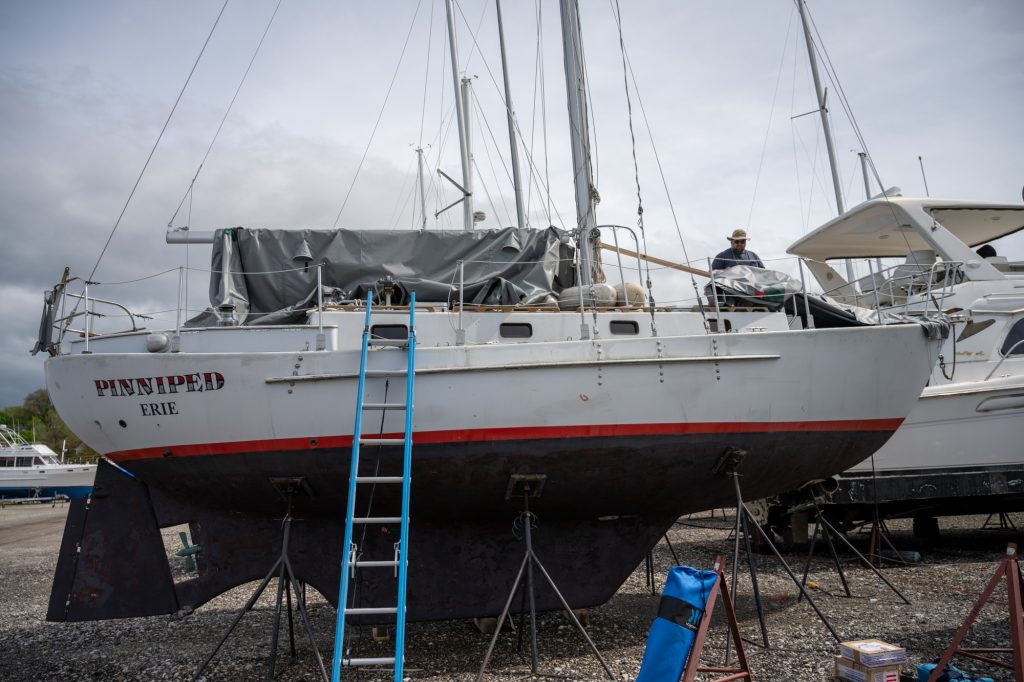
My Dad met me at the boatyard on my first trip up. We were able to get her uncovered, pump out the small bit of rainwater that had made it into the bilge, get the batteries on charge, and check on her overall condition. Everything was in good shape after the long winter under cover. We also used his drone to do a bit of an in-air rigging inspection, just to make sure everything was still OK at the masthead and stay attachment points.
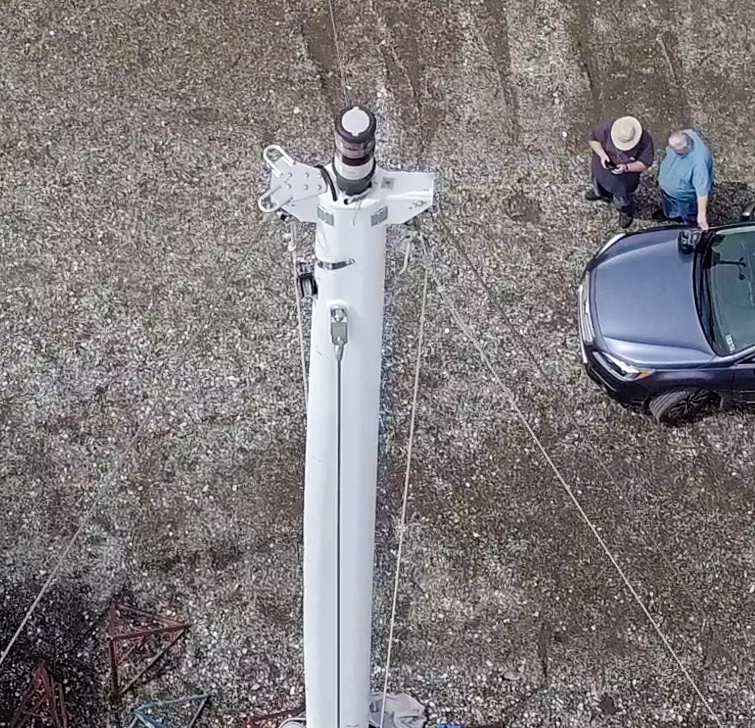
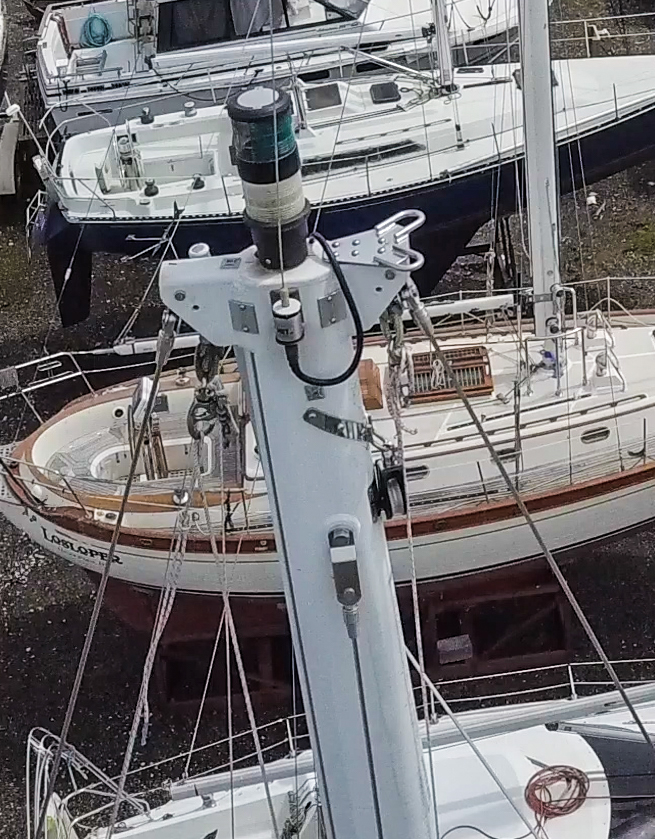
A strip-down was out of the question if we wanted to get her in the water before the end of summer. We re-planned and figured we would scrape and get one good coat of paint on the bottom, a second coat on the waterline, rudder, and leading edge of the keel, and we would do the full strip this autumn after we’re out of the water. I aimed for getting in by the second week of June.
We had a great weekend shortly thereafter, but the low temperatures were below the recommended cure temperature for the paint. Not good. Then we had a day I had planned to go up, but there was a surprise rain forecast that showed up that morning. Also not good.
Finally, we had a decent day, and I convinced my Dad came up with me. I had previously made another trip to drop off the paint, de-winterize the engine, and get her bottom mostly scraped, with the exception of the keel. While I was scraping the keel, I found a small bit of damage towards the rear of the keel, near the aperture for the prop. I hadn’t seen it before, but my scraper sliped in behind a small crack pretty deeply. I levered a little and popped off a disk about 3-1/2″ in diameter. Ugh.
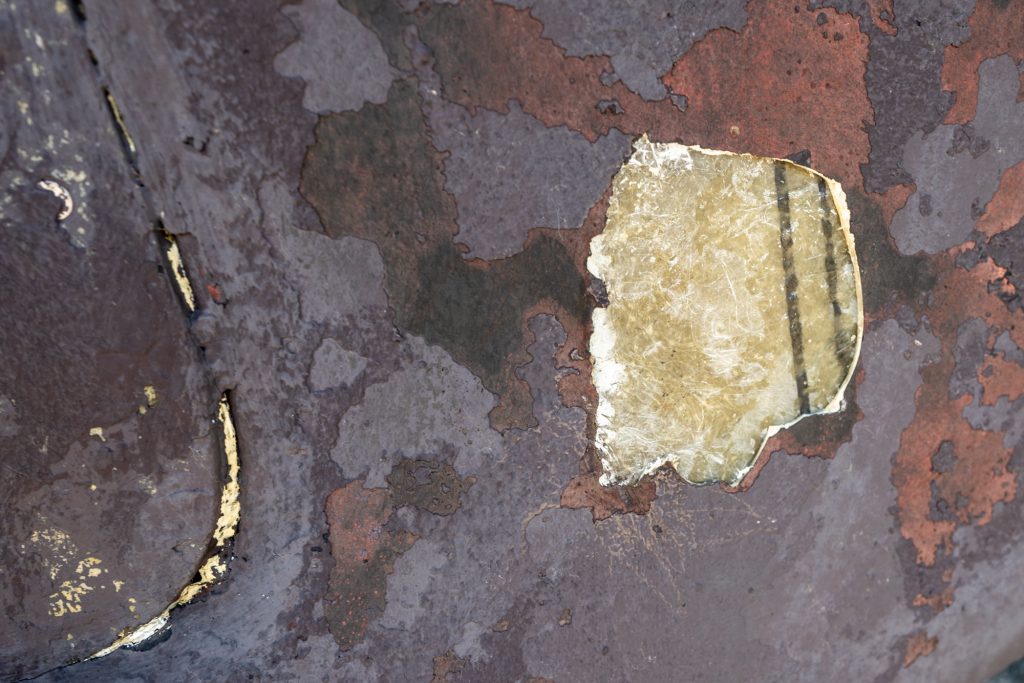
It looked like it was just fairing compound–the fiberglass underneath was in perfect condition, and there was no loose material around it. Still, it was below the waterline, and being totally new to fiberglass work, I had no confidence in my ability to repair it correctly. We finished painting, leaving the spot around the damage as-is because we would have to repaint it after the repair anyway. The following week, I notified the boatyard that we needed to have our stands moved so I could prep and paint under the pads, and let them know that we were going to be further delayed due to the repair.
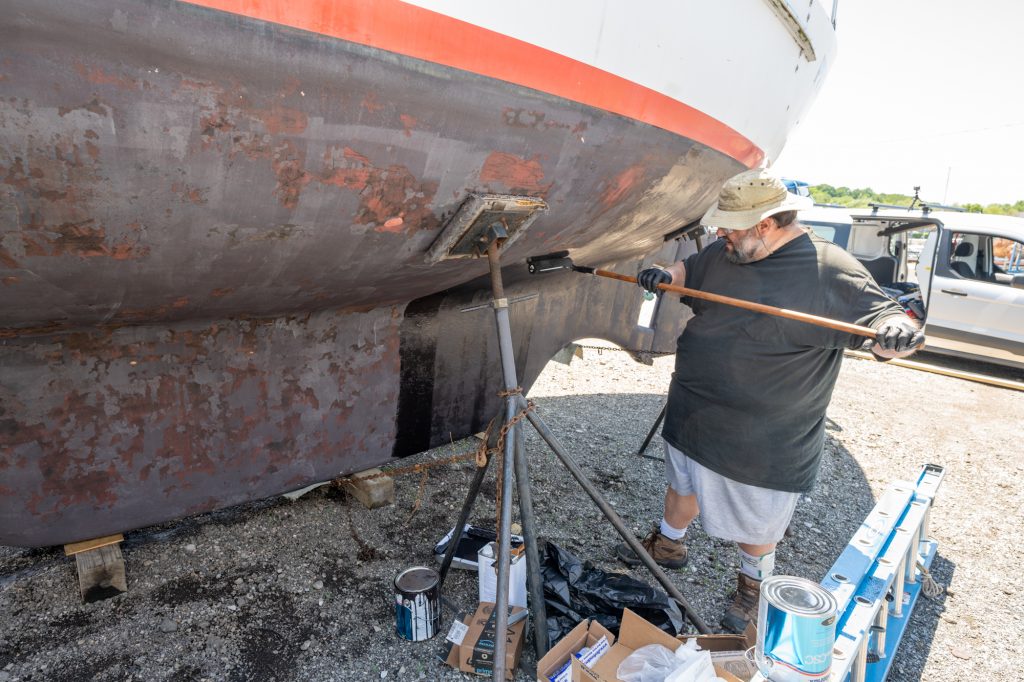
I located a company in Erie (Fiberglass Concepts), who was able to come out a little over a week later to make the repair. Unfortunately, we had now missed my personal deadline, and were well into the third week of June. I took another day off from work to go up to paint the pad spots and the repair area. The weather was beautiful, so I spent a little bit of time prepping her for launch, too, making sure docklines and fenders were run, batteries were charged and tested, things inside the cabin were generally secure, I re-attached the baby stay with the stays’l boom, and I pulled all of the halyards down and connected them to their deck anchors.
My Dad came up with me again on launch day, and helped me to document the launch and make sure I had everything done that I had planned to do, including cleaning up our stuff at the boatyard. He was a huge help through this whole process.
The launch itself was rather uneventful, thankfully. We arrived around 10AM to get the last few things ready on the boat, and were scheduled to be lifted at 11AM. The lift arrived at Pinniped shortly after we got there–they were done with the last boat, and figured they would get set up early. I finished up the few things I needed to do, gave them the thumbs up, and we were lifted and rolling a few minutes later. I had asked for a few extra minutes in the lift well to make sure our engine was OK, as I had changed the fuel filters and wanted to make sure I didn’t introduce any surprise air bubbles that would kill the engine while en route to our slip. They lowered us in, the engine started right up and ran smoothly. We let it idle at about 1250 RPM for several minutes. All seemed well, so they dropped the slings, I dropped her in gear, applied forward thrust, and off we went towards our slip.
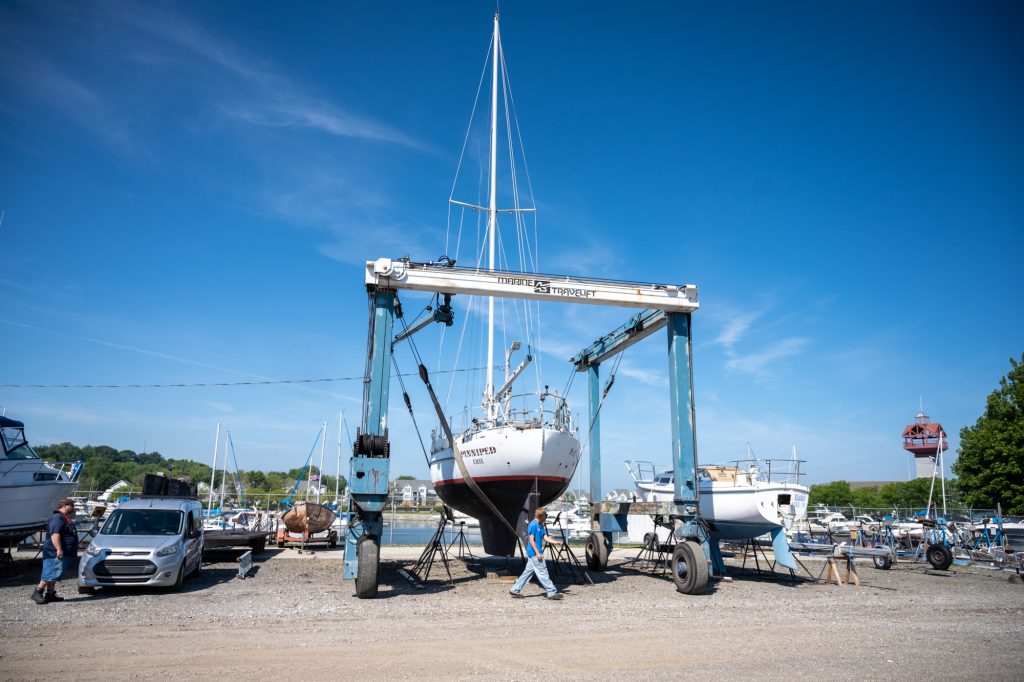
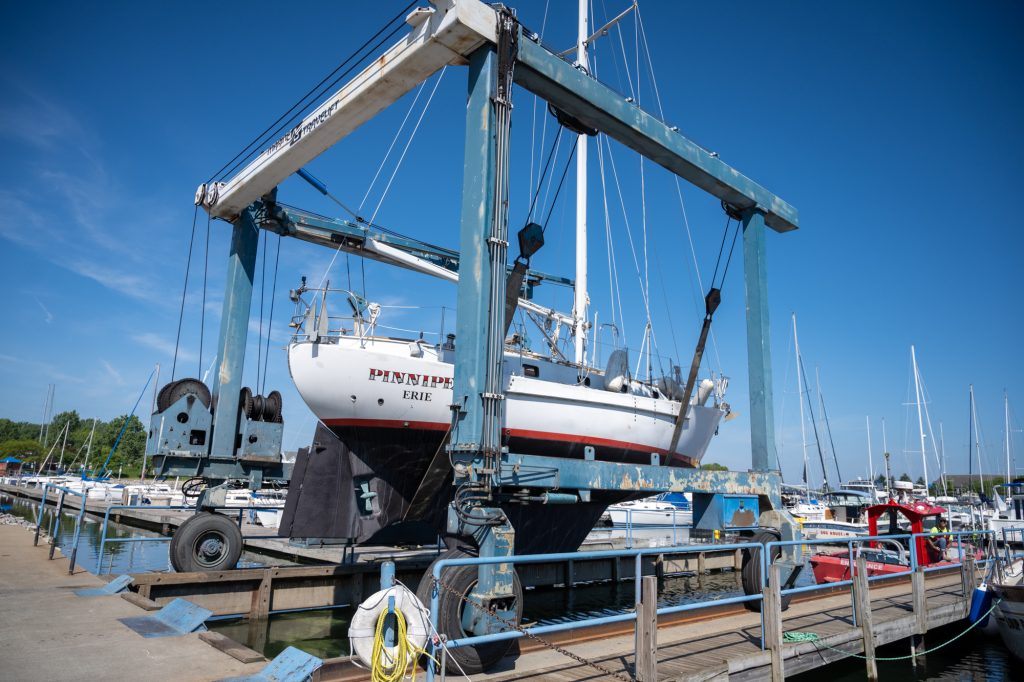
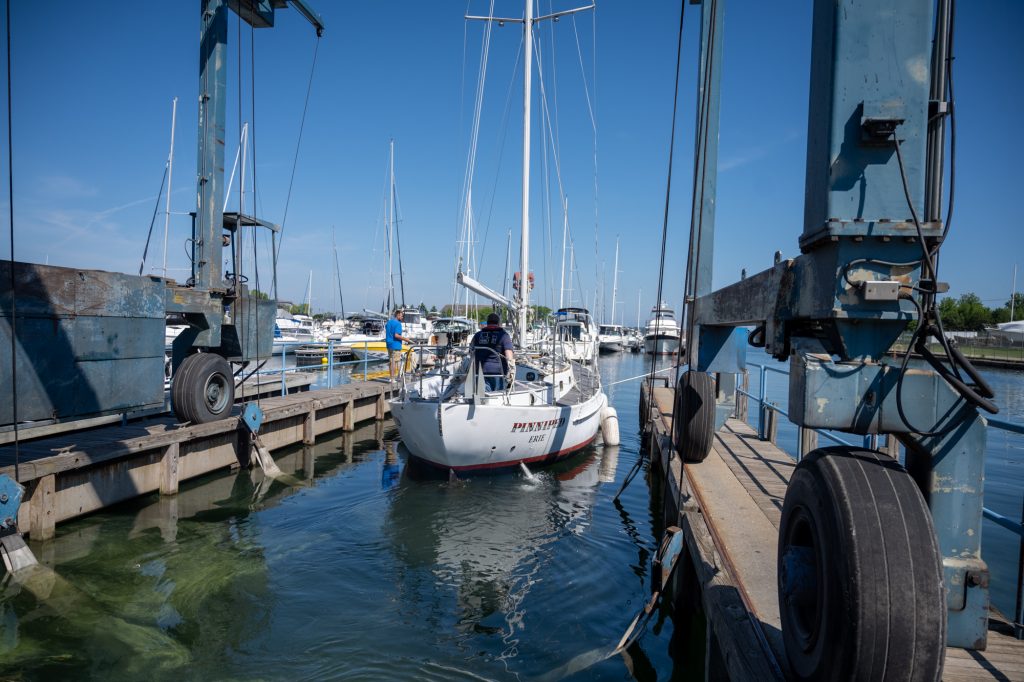
After I got her tied up, Dad and I went to pick up the sails from American Cruising Sails in Erie, who was doing some minor repair work and checking them out for us. They also made us a new deck bag for the jib. They did such a great job that I think they’ll be making us new mainsail and stays’l covers for next year! We had some lunch on the peninsula, dropped off the sails on Pinniped, I made sure she was secure, and we headed home. A rather successful trip, on a day when I had been quite nervous about all sorts of things going sideways.
